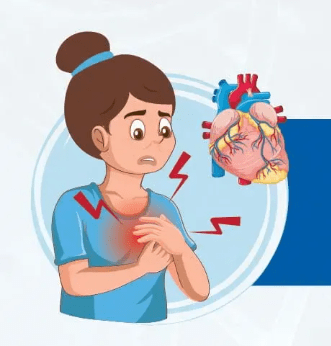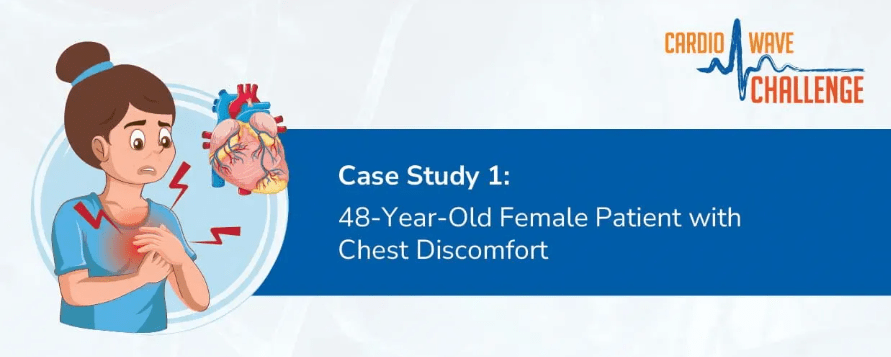AHA 2025: Heart Failure & Cardiomyopathy: Highlights
Early Re-Initiation of Optimal Guideline-Directed Medical Therapy after Coronary Artery Bypass Grafting in Patients with Heart Failure with Reduced Ejection is Associated with Decreased Mortality
Presenter: Alexandra Sperry
Guideline-directed medical therapy (GDMT) improves survival in patients with heart failure with reduced ejection fraction (HFrEF). However, cardiac surgical patients often experience perioperative GDMT interruption. This study evaluated GDMT re-initiation after coronary artery bypass grafting (CABG) in Medicare beneficiaries with HFrEF and baseline optimal therapy.
Among 634 patients, 247 (39%) achieved optimal GDMT within 90 days post-discharge (Heart Failure Collaboratory score ≥4 with beta-blocker and renin-angiotensin-aldosterone system inhibitor [RAASi]). Mineralocorticoid receptor antagonist (MRA) uptake was lowest (17.1% non-optimal vs. 70% optimal). Angiotensin receptor-neprilysin inhibitor (ARNI) use was limited (<5% non-optimal; 33.6% optimal).After propensity matching, patients in the optimal GDMT group had a significantly lower risk of mortality (8.1% vs. 17.0%; HR 0.45, 95% CI 0.25–0.76; p=0.002) and a reduced risk of the composite outcome of mortality and heart failure readmission at 2 years (19.0% vs. 30.4%; HR 0.57, 95% CI 0.40–0.82; p=0.003). Early GDMT re-initiation post-CABG significantly lowers mortality and heart failure readmission, emphasizing the need to overcome post-surgical barriers.
Longer Door-to-Diuretic Time is Associated with Increased In-Hospital Mortality among Acute Decompensated Heart Failure: Analysis of a Multi-Center Contemporary Cohort
Presenter: Dillon J. Dzikowicz
A retrospective study of 14,448 acute decompensated heart failure (ADHF) patients (mean age 72.9 years) across two U.S. health systems (2013–2020) found that delays in IV loop diuretic administration—measured as door-to-diuretic (D2D) time—were significantly associated with increased in-hospital mortality.
Each hour of delay raised mortality odds by 3.8% (OR = 1.038, p < .001). Only 2.1% received diuretics within the first hour. Patients in the fastest D2D quartile had the highest survival probability across the hospital stay (p < 0.01). Even among those with EF ≤ 35%, D2D time remained a strong predictor of in-hospital mortality (OR = 1.064, p = 0.001) despite GDMT use. Shorter D2D time is associated with lower in-hospital mortality in ADHF, support prioritizing early IV diuretic initiation in ADHF care.
Comparing Cardio-renal Outcomes of Finerenone versus Steroidal Mineralocorticoid Receptor Antagonist in Heart Failure with Reduced Ejection Fraction and Chronic Kidney Disease
Presenter: Olayinka Ibironke Adebolu
A retrospective cohort study of 402 patients (mean age 70; 65% male; 43% White) with HFrEF and CKD compared finerenone to steroidal MRAs (spironolactone/eplerenone) over a 3-year follow-up. Steroidal MRA showed lower risk for new need for IV diuresis (HR: 1.63, p = 0.026) when compared to Finerenone. No significant differences were found between both in terms of AKI (HR: 1.18, p = 0.34), hyperkalemia (HR: 0.89, p = 0.52), dialysis initiation (HR: 1.5, p = 0.2), heart failure exacerbation (HR: 0.93, p = 0.73), acute myocardial infarction (HR: 1.3, p = 0.2), atrial fibrillation (HR: 1.2, p = 0.34), cerebrovascular accident (HR: 0.7, p = 0.25) and MACE (HR: 0.7, p = 0.06). Mortality data were limited. In patients with CKD and HFrEF, Steroidal MRAs and Finerenone has comparable cardio-renal safety and effectiveness.
Spironolactone and Cardiovascular Outcomes in Dialysis Patients with Heart Failure
Presenter: Buyuan Hsiao
A retrospective cohort study assessed the role of spironolactone in 6,951 dialysis patients with heart failure (HF).
Spironolactone use was linked to significantly lower risks of 5-year incidence of major adverse cardiovascular events (HR 0.892) and all-cause mortality (HR 0.738) compared to non-spironolactone users. Benefits were consistent across subgroups, including age, sex, and comorbidities (diabetes, ischemic heart disease, atrial fibrillation). However, spironolactone was associated with increased risks of ischemic stroke (HR 1.157), hypotension (HR 1.197) and hyperkalemia (HR 1.086). These findings suggest that spironolactone offer cardiovascular benefits of reducing MACE & CV mortality in this high-risk population of dialysis with HF, but should be used cautiously, warranting further validation through randomized controlled trials.
Impact of Sodium-Glucose Cotransporter-2 Inhibitors on Mortality and Cardiovascular Outcomes Following TAVR in Heart Failure Patients: A Propensity-Matched Cohort Study
Presenter: Omar Obeidat
In a multicenter cohort of 6,044 HF patients (matched 1:1 using propensity scores, each cohort included 3,022 patients) undergoing transcatheter aortic valve replacement (TAVR), treatment with SGLT2i within 30 days was linked to reduced all-cause mortality at 3 months (3.5% vs. 4.9%; HR 0.71; P=0.006), 6 months (5.0% vs. 8.1%; HR 0.61; P<0.001), 12 months (7.3% vs. 10.5%; HR 0.71; P<0.001), and 5 years (10.7% vs. 20.6%; HR 0.59; P<0.001). SGLT2i also lowered MI (OR 0.81; P=0.007) and emergency hospital visits (OR 0.63; P<0.001). Stroke reduction at 6 months (OR 0.79; P=0.041) was not sustained.
Early initiation of SGLT2i as part of post-TAVR medical therapy may be beneficial in this patient population.
Guideline-Directed Medical Therapy and Clinical Outcomes in African American Women with Congestive Heart Failure from Low- to Medium-Income Backgrounds at a Safety Net Hospital
Presenter: Ricardo Antonio Rodriguez Mejia
A retrospective study in African American women with heart failure (n=283) assessed the association between guideline-directed medical therapy (GDMT) regimen and clinical outcomes.
Suboptimal use of GDMT was linked to higher readmissions (50% at 30 days, 57% at 90 days) and 23% annual mortality. Each one-point increase in GDMT composite score reduced readmissions by 15% (30-day OR 0.85, p=0.02; 90-day OR 0.86, p=0.03). Beta blockers (BB, OR 0.13, p=0.03) and mineralocorticoid receptor antagonists (MRAs, OR<0.01, p<0.01) were most effective in lowering mortality; RAS inhibitors with BB (OR 0.70, p=0.04) and MRAs (OR 0.27, p<0.01) in reduced readmissions. Hence, BB should be prioritized for mortality reduction, MRAs for both mortality and readmission reduction, and RAS inhibitors with BB for reducing readmissions in this population.
Guideline-Directed Medical Therapy Prescribing Trends in Patients with Heart Failure with Preserved Ejection Fraction: A Nationwide Analysis
Presenter: Joseph Kassab
Prescribing trends of guideline-directed medical therapy (GDMT) in 940,185 heart failure with preserved ejection fraction (HFpEF) were evaluated.
GDMT prescribing remained suboptimal and influenced by comorbidities: 18.2% received sodium-glucose cotransporter-2 inhibitors and were more likely to have diabetes & kidney disease; 29.8% MRAs and were likely to have hypertension, 9.3% GLP-1 RAs and were likely to have diabetes & high BMI. Angiotensin converting enzyme inhibitors/angiotensin receptor blockers (52.3%) and beta-blockers (57.6%) were commonly used, especially in atrial fibrillation/flutter & coronary artery disease. Prescriptions for newer therapies increased over time, but beta-blockers remained the most commonly prescribed medication in HFpEF. These findings highlight the need for evidence-based treatments tailored to patient profiles.
Prevalence and Risk Markers for Heart Failure in Hypertrophic Cardiomyopathy: A Multicenter Cross-Sectional Study with Central Assessment of Biomarkers and Echocardiograms
Presenter: Elizabeth Bigras
A cross-sectional analysis of 1,632 hypertrophic cardiomyopathy (HCM) patients from the HiRO-HCM registry included HCM patients (≥16 years) with available data to allow for central ascertainment of heart failure (HF), defined as history of hospitalization for HF requiring diuretics, heart transplantation or mechanical circulatory support; and/or NYHA class ≥ II with increased filling pressure (E/e′ ratio ≥ 14 and/or a NT-proBNP ≥ 400 ng/L [≥800 ng/L in AF]).
HF was identified in one-third of patients with HCM (31%), with higher prevalence in obstructive HCM (41%) and non-obstructive HCM with LVEF<50% (65%) and lower in HCM with LVEF ≥50% (26%). Female sex was a consistent and strong predictor of HF across all subgroups, with a threefold increased risk (P<0.001). These findings highlight the need for sex-specific evaluation and early HF recognition in HCM, informing risk stratification and guiding selection for emerging therapies targeting HCM-related HF.
AHA 2025, November 7th-10th 2025, New Orleans, Louisiana, USA




